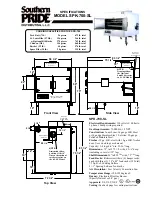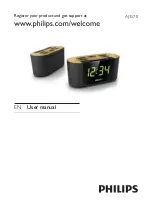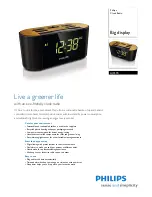
SS-400-006
1 I56-3535-002R
Table of Contents
Page
[1] Limitations of Duct Smoke Detectors . . . . . . . . . . . . . . . . . . . . . . . . . . 1
[2] General Description . . . . . . . . . . . . . . . . . . . . . . . . . . . . . . . . . . . . . . 1
[3] Contents of the Duct Smoke Detector Kit . . . . . . . . . . . . . . . . . . . . . . . 2
[4] Detector Installation . . . . . . . . . . . . . . . . . . . . . . . . . . . . . . . . . . . . . . 2
[5] Sampling Tube Installation . . . . . . . . . . . . . . . . . . . . . . . . . . . . . . . . . 3
[6] Measurement Tests . . . . . . . . . . . . . . . . . . . . . . . . . . . . . . . . . . . . . . . 3
[7] Field Wiring . . . . . . . . . . . . . . . . . . . . . . . . . . . . . . . . . . . . . . . . . . . . 4
[8] Verification of Operation . . . . . . . . . . . . . . . . . . . . . . . . . . . . . . . . . . . 4
[9] Dectector Cleaning Procedures . . . . . . . . . . . . . . . . . . . . . . . . . . . . . . 5
[10] Sensor Replacement . . . . . . . . . . . . . . . . . . . . . . . . . . . . . . . . . . . . . 5
Warranty . . . . . . . . . . . . . . . . . . . . . . . . . . . . . . . . . . . . . . . . . . . . . . . . . 6
BEfORE InSTaLLInG
Please thoroughly read System Sensor’s
Guide for Proper Use of Smoke Detec-
tors in Duct Applications
(I56-473-XX), which provides detailed information
on detector spacing, placement, zoning, wiring, and special applications . Cop-
ies of this manual are available from System Sensor . NFPA Standards 72, 76,
and 90A should also be referenced for detailed information .
NOTICE:
This manual should be left with the owner/user of this equipment .
All sensors must be tested after installation and periodically thereafter . Test-
ing methods must satisfy the Authority Having Jurisdiction (AHJ) . Sensors
offer maximum performance when tested and maintained in compliance with
NFPA 72 .
SPECIfICaTIOnS
Length:
14 .4 inches
Width:
5 .0 inches
Depth:
2 .9 inches
Weight:
1 .6 pounds
Operating Temperature Range:
32° to 100°F (0° to 38°C)
Operating Humidity Range:
10% to 93% Relative Humidity
Duct Air Velocity:
300 – 4000 ft ./min .
Voltage Range:
15 – 32 VDC Peak
Standby Current (nominal):
230uA at 24 VDC (no communication)
330uA at 24 VDC (one communication every 5 sec . with LED enabled)
LED current (nominal):
6 .5mA at 24 VDC
[1]LImITaTIOnS Of DuCT SmOkE DETECTORS
WARNING
The National Fire Protection Association has established that DUCT DETEC-
TORS MUST NOT BE USED AS A SUBSTITUTE FOR OPEN AREA DETECTOR
PROTECTION as a means of providing life safety . Nor are they a substitute for
early warning in a building’s regular fire detection system .
System Sensor supports this position and strongly recommends that the user
read NFPA Standards 90A, 72, and 101 . The DNRHS Air Duct Smoke Detectors
are listed per UL 268A .
This device will not operate without electrical power . Fire situations may
cause an interruption of power . The system safeguards should be discussed
with your local fire protection specialist .
This device will not sense smoke unless the ventilation system is operating
and the cover is installed .
For this detector to function properly, it MUST be installed according to the
instructions in this manual . Furthermore, the detector MUST be operated within
ALL electrical and environmental specifications listed in this manual and the
sensor head installation manual . Failure to comply with these requirements
may prevent the detector from activating when smoke is present in the air duct .
[2] GEnERaL DESCRIPTIOn
An HVAC system supplies conditioned air to virtually every area of a building .
Smoke introduced into this air duct system will be distributed to the entire
building . Smoke detectors designed for use in air duct systems are used to
sense the presence of smoke in the duct . In facilities with large air changes per
hour, airflow can carry smoke particles directly to the HVAC system . Per NFPA
76 Very Early Warning Fire Detection (VEWFD) sensors shall be installed to
monitor return air from the space . The DNRHS can be installed to monitor the
return air from the space in order to meet NFPA 76 requirements .
I56-3535-00
2R
DnRHS Intelligent
air Duct Smoke Detector
InSTaLLaTIOn anD maInTEnanCE InSTRuCTIOnS
3825 Ohio Avenue, St . Charles, Illinois 60174
1-800-SENSOR2, FAX: 630-377-6495
www .systemsensor .com
H0569-06
EXHAUST TUBE
SENSOR HEAD
SENSOR MODULE COVER
WIRING COMPARTMENT COVER
WIRING COMPARTMENT
SENSOR MODULE
SAMPLING
TUBE
NOTE: SENSOR HEAD IS ONLY
INCLUDED ON SPECIFIED MODELS.
SOLD
SEPERATELY
fIGuRE 1:


























